BIBLIOGRAPHY
- Childs, Art. Yarns of the Big Woods., (Chicago: Associated Editors, 1922, 1925).
- Robins, J.D. “Paul Bunyan.”. The Canadian Forum. Toronto, Ontario, February, 1926, Vol. VI, No. 65.
- Sill, Ben, Sill, Cathryn, and Sill,John. A Field Guide to Little-known & Seldom-seen Birds of North America, (Atlanta: Peachtree Publishers, 1988).
- Woodman, Neal. “Pranked by Audubon: Constantine S. Rafinesque’s Description of John James Audubon’s Imaginary Kentucky Mammals.” Archives of Natural History 43, no. 1 (April 2016): 95–108.

THIS NEW FISH HAS FUR.
The polar trout, the only fur-bearing fish known to natural history, is the latest contribution of the arctic regions, according to John Bunker, of Northwood Center, N.H. Who returned to Boston recently after a two months' exploring trip in Greenland. He brought photographs and specimens of a strange fish, which he has called a polar trout. This peculiar denizen of the polar seas resembles a square tail trout in shape and gameness and attains ten to fifteen pounds in weight. The skin is covered with fine brownish fur, resembling the texture of mole-skin. This fur is lightly spotted with white. Bunker caught three specimens, two in a river and one in a small headwater pond about 200 miles north of Baffin Bay.
- Keowee Courier, November 12, 1913

ANOTHER HORNED RABBIT.
The rabbit was of the ordinary cottontail family, but had two well-developed horns, about four inches long, one on either side of the head. Mr. Myers said that he had killed several during the winter like the one he was showing yesterday.
One man who saw the rabbit yesterday remarked that he remembered a time, not so very far in the past, when all the rabbits that were killed had horns like those on the one shown by Mr. Myers. Even if this should be true, horned rabbits are enough of a rarity during the present day to make this one quite a curiosity.
- The Wichita Daily Eagle, Februrary 17, 1904

MR. OPSAHL SEES QUEER ANIMAL.
It Haunts the Woods About His Country Place at Lake.
A. H. Opsahl asserts excitedly that it is a surviving representative of a supposedly extinct saurian that looks like a cross between an igunana and a rocking horse, and offers to produce witnesses to the strange nocturnal proclivities of the uncanny brute that haunts the woods about his country place. Ruritania. Lake Minnetonka. The hodag is supposed to be dead. As a matter of fact "there weren't no such animal." A lot of lumbermen over in Michigan faked up a hideous looking reptile and had a picture taken of him, which the Northwestern Lumberman printed, but somebody blew the game and the hideous as an inhabitant of Dante's dread picture, proved to be a stuffed nothing in particular.
But Mr. Opsahl swears that the Michiganders builded better than they knew. If Opsahl has not discovered a hodag he certainly has turned up some awful creature that bellows like an elephant in a rage, wallows in the swamp and grunts, jumps stiff legged from the dead grass and brush of dark nights, with its spinal projections all standing, and generally keeps people at Orono Point wondering what sort of horror has invaded their sylvan retreat.
To come down to cases, there is a determined hunt going on from Ruritania and surrounding estates after some strange creature that has been seen and shot at a dozen times during the past winter, but which seems to bear a charmed life. Opsahl himself emptied a double load of 13 B B shot at the beast or reptile, the range being less than 30 yards in the moonlight. The shot was heard to rattle like hail on the scaly coat of the creature, which promptly emitted a sound which resembled, roughly speaking, a cross between the laugh of a hyena and the bawl of an indignant cow.
Several parties have visited the locality during the winter in an effort to round up the strange visitor to Ruritania, but without success, the animal making its appearance only at night and preferably, it seems, on dark nights.
"I don't know what breed this creature belongs to," said Mr. Opsahl yesterday, "but what I do know is there is nothing in the books describing him. He is scaly all over like a big fish. I have seen his scales shining in the moonlight and taken a steady shot over the bough of a tree at him. He is not in the least injured by being shot at with any sort of small arm. I tried a 35-caliber Winchester on him twice and know that he was hit, because he jumped and made for the woods as hard as he could go, bellowing fiercely. When he runs his tail is held high above his back and it has spines sticking out all along its length like an Iguana. I never could get a good look at the creature's head, but I've got a picture of it in my mind. I should like to get a photograph of this thing with a good sized camera, but its habits are nocturnal and the only picture we shall ever get will be taken after in dead."
The prevailing opinion is that the creature which has created so much discussion it the Point is an escaped specimen from some circus or side show. No report of such an escape is remmebered, but the people who witnessed the latest "hodag" refuse to be laughed out of contenance. Mr. Opsahl takes a walk around his place every night in an effort to get another shot at the animal. He has provided himself with a 45-90 Winchester and hopes to report results within a few days.
- The Saint Paul Globe, April 20, 1903



![]](images/title_cbrkt.png)